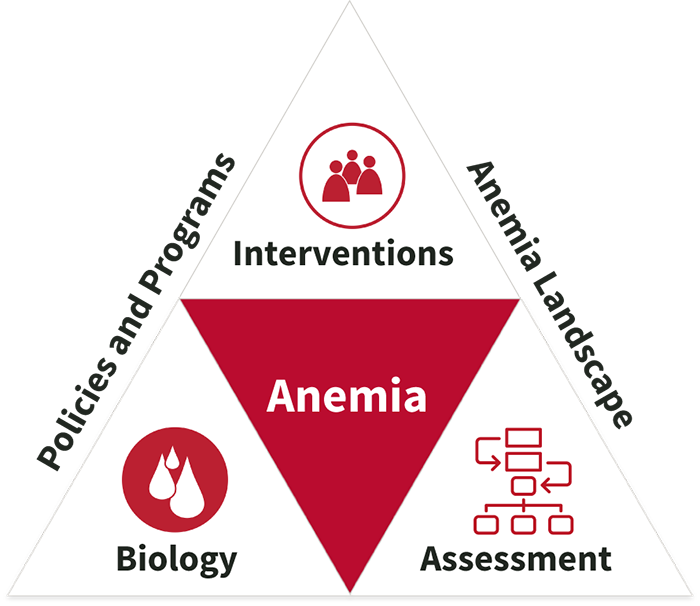Anemia is a public health concern disproportionately affecting young children, pregnant women, and women of reproductive age. The Global Burden of Disease Study estimates that iron deficiency anemia and thalassemia are the leading anemia causes worldwide.
While anemia is prevalent around the world, the underlying causes differ among different populations and regions. A “one size fits all” approach does not exist, and implementation of strategies to reduce anemia depend on the main causes of anemia, and the financial and technical capacity of each country.
We found 93 resource(s)
Scoping Review of Intervention Strategies for Improving Coverage and Uptake of Maternal Nutrition Services in Southeast Asia
Journal Article published by International Journal of Environmental Research and Public Health in
This review recommends diverse strategies and delivery mechanisms, including health education, supplementation, community participation, and robust health system responses to achieve effective maternal nutrition programs.
The View from Development Donor Countries, Featuring USAID Chief Nutritionist Shawn Baker
Blog published by Devex in
While evidence-based solutions exist and progress has been made to improve food systems and nutrition, the pandemic has reduced the delivery of nutrition services and has impacted every system that people rely on for good nutrition. In this video interview, former USAID Chief Nutritionist Shawn Baker calls for additional work to strengthen food,…
Risk Factors for Anaemia Among Ghanaian Women and Children Vary by Population Group and Climate Zone
Journal Article published by Maternal & Child Nutrition in
This paper presents the association of risk factors for anemia in children 6–59 months and 15–49-year-old non-pregnant women living in Ghana, using data from a nationally representative cross-sectional micronutrients survey.
Variability in Haemoglobin Concentration by Measurement Tool and Blood Source: An Analysis from Seven Countries
Journal Article published by J Clin Pathol. in
This paper uses data from seven countries (Cambodia, India, The Gambia, Ghana, Laos, Rwanda, and USA) to explore factors such as the blood sampling site (capillary vs venous), the equipment (HemoCue vs automated hematology analyzer) and the model of the HemoCue device (201+ vs 301) that may impact hemoglobin measurements in capillary and venous…
A Qualitative Analysis of Program Fidelity and Perspectives of Educators and Parents after Two Years of the Girls' Iron-Folate Tablet Supplementation (GIFTS) Program in Ghanaian Secondary Schools
Journal Article published by Curr Dev Nutr in
To address the burden of anemia in adolescent girls in Ghana, the Girls' Iron-Folate Tablet Supplementation program was established in 2017. This study qualitatively describes the differences in program implementation among schools and across time after two years of implementation, and highlights potential factors that drive such differences.
A School-Based Weekly Iron and Folic Acid Supplementation Program Effectively Reduces Anemia in a Prospective Cohort of Ghanaian Adolescent Girls
Journal Article published by Journal of Nutrition in
This study evaluated the effectiveness of school-based weekly iron and folic acid supplementation program in reducing the burden of anemia and increasing hemoglobin concentrations in two regions of Ghana.
Can Automated Hematology Analyzers Predict the Presence of a Genetic Hemoglobinopathy? An Analysis of Hematological Biomarkers in Cambodian Women
Journal Article published by Diagnostics (Basel) in
This study evaluated the accuracy of a Sysmex XN-1000 hematology analyzer in identifying genetic hemoglobinopathies in nonpregnant Cambodian women and to assess the ability of six complete blood count biomarkers to predict a genetic hemoglobinopathy.
Anemia Prevalence and Anthropometric Status of Indigenous Women and Young Children in Rural Botswana: The San People
Journal Article published by Nutrients in
This study reports the results of a cross-sectional survey to assess the anemia prevalence among and anthropometric indices of women and young children belonging to the San People (also known as the Basarwa or Bushmen), an Indigenous minority group, in Ghanzi District in Botswana.



